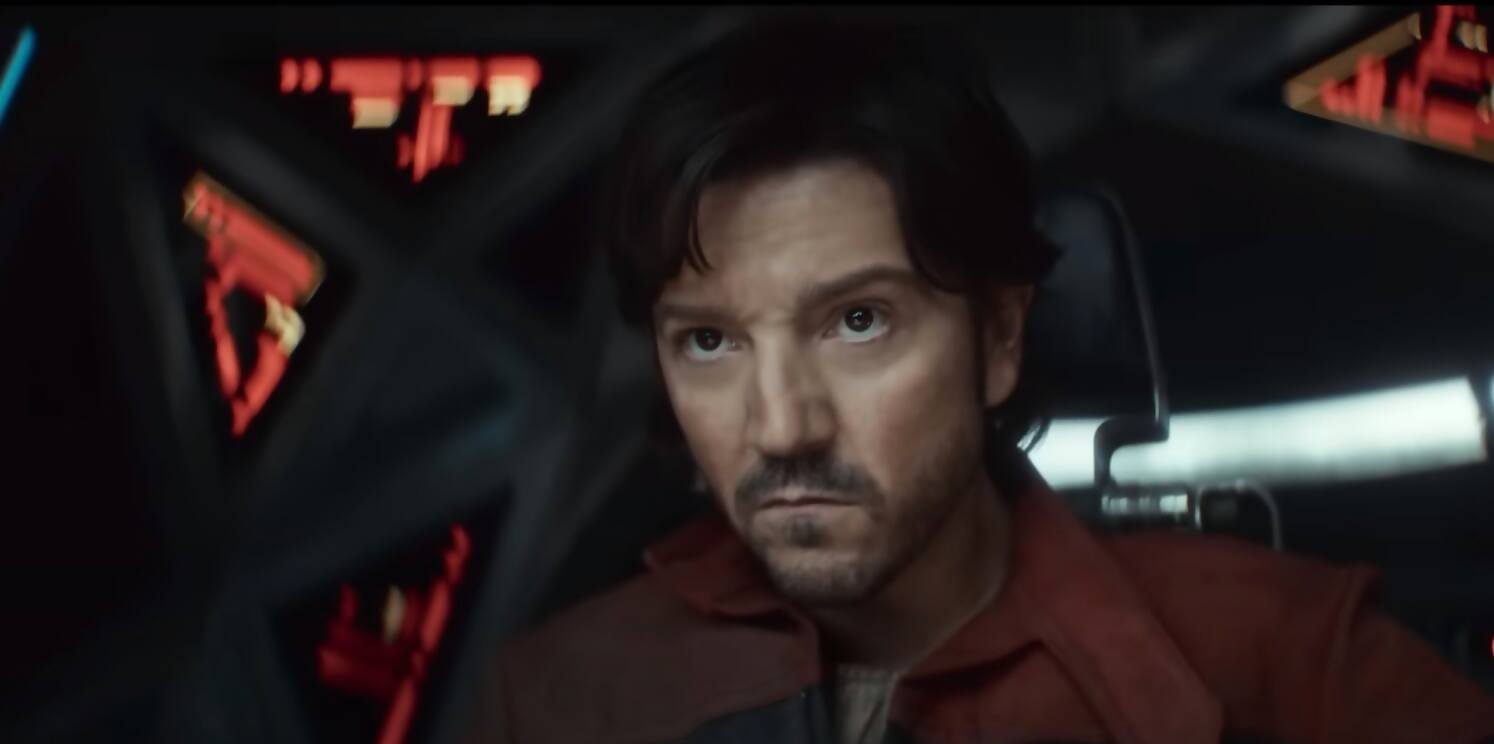
Despite its acclaim and decent ratings, Star Wars spin-off series Andor may prove to be a one-off on Disney+. Here’s why.
Is $650m too much for a television series? It depends on how you look at the numbers. At first glance, it seems like an unfathomable amount to spend on a show about made-up rebellions in space, featuring characters with names like Bix or Mon Mothma. But that $650m price tag was, presumably, spread out over the course of Star Wars spin-off series Andor’s 24 episodes – meaning each installment cost a shade over $27m.
That’s still a lot of money, but then things in the Star Wars universe are seldom cheap. The Budget for The Force Awakens was reckoned to be somewhere around $450m, once tax breaks are accounted for; The Rise Of Skywalker also cost somewhere north of $400m. If you work out how much Andor cost per minute of onscreen footage, it’s probably a relative bargain compared to those feature films.
It also goes without saying that Disney got a lot of acclaim for its investment; Andor is by far the most universally liked Star Wars offering the company has released since it acquired Lucasfilm over a decade ago.
All the same, there are several reasons why showrunner Tony Gilroy’s series, about the rise of the Rebel Alliance and its fight against the Galactic Empire, could prove to be a one-off.
That dizzying $650m was quoted by Gilroy himself, speaking in his usual unfiltered fashion at the ATX Television Festival on the 29th May. The writer-director’s comments have been widely shared across the web by now, not least to the ear-grabbing quote “streaming is dead”, which we’ll get to shortly.

What Gilroy was driving at in his interview, however, was the specific climate in which Andor was greenlit and shot. Development on the show began in late 2017, a period when Disney was going all-out in commissioning material for its then under-construction Disney+ streaming platform. Eventually launching in 2020 just as the pandemic hit, Disney+ was a multi-billion dollar investment for its wider company, and no expense was spared in filling up its menus with a host of pricey shows and films, including WandaVision for Marvel, Star Wars series The Mandalorian, and Pixar films like Soul and Luca.
Within a few years, however, Disney began to realise just how expensive its approach to Disney+ was. The quality of its output may have attracted subscribers, especially during those Covid lockdowns, but retaining those customers was (and is) always an issue when there are numerous rival streaming platforms to choose from. The cost of making effects-heavy shows and films is also difficult to justify in the long term, particularly when it cannibalises potential revenue from the sale of discs and cinema tickets. (Then there was the hundreds of millions it used to make from licensing its output to Netflix; in making a competing streaming platform, Disney said goodbye to a deal once worth about $300m a year.)
Read more: Andor | The final episodes provide a powerfully emotional bridge to Rogue One
This explains why Disney’s strategy began to change somewhat around the year 2023. The company began raising subscription prices, cracking down on password sharing, and even deleting high-profile pieces of entertainment from its platform both that year and the one following. Returning CEO Bob Iger also began slimming down Disney’s slate of releases in 2024, announcing plans that the firm would be ‘leaning more’ into sequels rather than untested, original ideas.
As Gilroy himself implied in his ATX Fest interview, Andor was waved through during a unique moment in Disney’s recent history. The wider company’s attitude, going purely by the filmmaker’s comments, was to simply sign the cheques and leave the creative work to people like Gilroy. The only time the Mouse House drew the line was when he tried to throw in a bit of swearing at the end of Andor’s first season.

“I mean, [for] Disney this is $650 million,” Giroy said (via IndieWire). “For 24 episodes, I never took a note. We said ‘Fuck the Empire’ in the first season, and they said, ‘Can you please not do that?’”
By the time season 2 began filming in November 2022, however, Disney’s blank cheque attitude had already changed somewhat. What was originally pitched as a five-season saga had been shaved down to 12 unusually-structured episodes. (It could be argued that Gilroy essentially made four TV movies, broken up into three episodes per story.)
Even here, concessions had to be made for budget; last month, Gilroy talked about a planned space horror episode which had to be scrapped for financial reasons. “We could not afford to do it,” Gilroy said. “It was made clear that it was out of the range, so we had to abandon that and consolidate things.”
Of Andor’s second and final run, Gilroy said more recently, “In Season 2, they said, ‘Streaming is dead, we don’t have the money we had before,’ so we fought hard about money, but they never cleaned anything up. That [freedom] comes with responsibilities.”
While we can’t know who it was at Disney that said ‘Streaming is dead’ or exactly what they meant without the relevant context, it only takes a quick look around to see that the entire landscape has changed for platforms like Disney+ since the streaming wars started. Adverts have begun to sneak in for lower-tier subscribers. Live sports have since become a fixture, both on Disney+ and rivals like Netflix.

This year has seen news of job losses and cost cutting, with Disney’s spend on production being trimmed by around $1bn. Within the Star Wars franchise, Disney has ruled out commissioning second seasons of The Acolyte or Skeleton Crew due to low viewing figures.
Gilroy has himself ruled out of making another Star Wars show now that Andor has finished. And while the show’s viewing figures were healthy – outpacing even lighter fare like Ahsoka over its final episodes – it’s looking increasingly unlikely that Disney would commission a Star Wars series quite as heavy and adult-skewing as Andor again.
The show was greenlit amid a rush of spending that saw Netflix blow some $55m on a sci-fi TV series that will never see the light of day, Apple spend $200m apiece on films as varied as Napoleon, Killers Of The Flower Moon and Argylle, while Disney itself spent about $150m on a Willow fantasy spin-off, only to delete it months later.
By now, streaming firms are looking for new, more cost-effective ways to hook in subscribers. The depressing success of Prime Video’s Squid Game: The Challenge-inspired series Beast Games, featuring the gurning celebrity YouTuber MrBeast, has prompted Amazon to greenlight a second season, while streaming firms in general are looking at YouTube for more ideas along the same lines.

An article recently published by Vulture paints a portrait of Hollywood studios and streaming companies racing to respond to the increased presence on the planet’s televisions; according to the outlet’s numbers, YouTube usage now accounts for 12.4 percent of all TV viewing worldwide – outpacing Netflix at 7.5 percent.
In response, Netflix is making MrBeast-style deals with YouTube stars like Ms Rachel and Tony Hinchcliffe. The company has also made adjustments to its app in order to accommodate vertical clips – all the better to compete with TikTok and YouTube Shorts. Disney hasn’t made similar moves as yet, but it doesn’t seem like much of a stretch that its shareholders will start asking how it’s going to respond to a competitor that has such a sizable young audience (45 percent of people who watch YouTube on a TV are under 35, according to Nielsen). As one executive told Vulture, “The reality is, over time, we’ll all be the same thing.”
There’s the possibility, of course, that Disney will look at the viewership for Andor and commission another Star Wars series that tells a similarly ground-level story. But would the corporate giant again risk spending $650m on a complex saga about the mechanics of fascism and the sacrifices needed to counter it? Assuming Tony Gilroy’s true to his word and doesn’t return, would Disney entrust another writer with a similarly dark project in today’s climate? Or would the company rather spend its money on a safer bet – a broader show about good and evil, more apt to sell toys and other merchandise?
In all likelihood, Andor was a wonderful anomaly: a disturbance in the Force that we won’t feel again for some time to come.
—Thank you for visiting! If you’d like to support our attempts to make a non-clickbaity movie website:
Follow Film Stories on Twitter here, and on Facebook here.
Buy our Film Stories and Film Junior print magazines here.
Become a Patron here.








